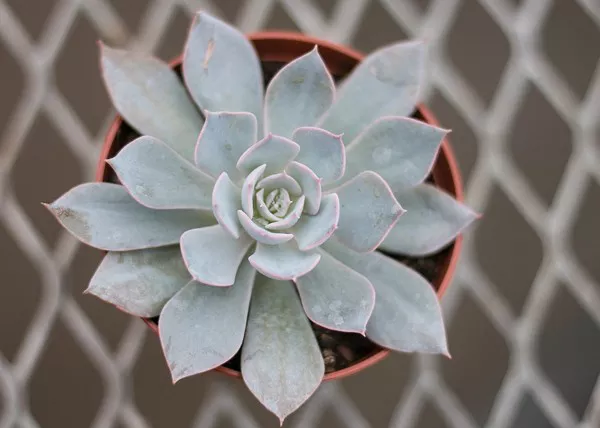Moonstone succulents, scientifically known as Pachyphytum oviferum, are prized for their mesmerizing appearance and ease of care. With their chubby, rounded leaves resembling little moons, these succulents are a favorite among plant enthusiasts. Propagating moonstone succulents is a rewarding endeavor that allows you to expand your collection or share the beauty of these plants with friends and family. In this comprehensive guide, we will explore the step-by-step process of propagating moonstone succulents to ensure success and healthy growth.
Understanding Moonstone Succulents
Before delving into the propagation process, it’s essential to understand the basic characteristics of moonstone succulents. Native to Mexico, these plants belong to the Crassulaceae family and thrive in arid environments. Moonstones are classified as rosette-forming succulents, with fleshy leaves arranged in a compact, circular pattern.
Moonstone succulents prefer bright, indirect light and well-draining soil. They are drought-tolerant plants that store water in their leaves, making them well-suited for low-water environments. Proper care, including adequate sunlight and occasional watering, is crucial for maintaining the health and vibrancy of these succulents.
Selecting Healthy Parent Plants
Propagation begins with selecting healthy parent plants from which to take cuttings. Look for moonstone succulents that exhibit robust growth, vibrant coloration, and no signs of disease or damage. Healthy plants will yield the best results when it comes to propagating new specimens.
Inspect the leaves for any signs of pests, such as mealybugs or aphids, and avoid selecting plants that show evidence of infestation. Additionally, choose mature moonstone succulents for propagation, as they are more likely to produce successful cuttings.
Gathering Materials
Before starting the propagation process, gather all the necessary materials:
1. Healthy moonstone succulent(s)
2. Clean, sharp scissors or pruning shears
3. Well-draining potting mix or succulent soil
4. Small pots or containers for planting
5. Optional: rooting hormone (for faster root development)
Ensure that all tools and containers are clean and sterilized to prevent the spread of disease to the cuttings.
Propagating Moonstone Succulents:
Step 1: Selecting and Preparing Cuttings
Choose healthy leaves for propagation, ensuring they are plump and free from blemishes or damage. Using clean scissors or pruning shears, carefully remove the leaves from the parent plant by gently twisting them from the stem. Aim to take clean cuts, leaving no part of the leaf attached to the stem.
Allow the cuttings to air dry in a shaded area for 1-2 days, allowing the cut ends to callus. This step is crucial for preventing rot and ensuring successful root formation.
Step 2: Planting Cuttings
Once the cuttings have callused, prepare the planting containers by filling them with well-draining potting mix or succulent soil. Make small indentations in the soil using your finger or a small tool, ensuring they are deep enough to accommodate the cuttings.
Dip the callused end of each leaf cutting into rooting hormone powder (optional) to encourage faster root development. Insert the cuttings into the soil, burying the callused end slightly while keeping the top portion of the leaf exposed.
Step 3: Providing Optimal Growing Conditions
Place the planted cuttings in a location with bright, indirect light. Avoid placing them in direct sunlight, as this can cause sunburn or heat stress. Maintain a consistent temperature between 65°F to 75°F (18°C to 24°C) to promote healthy growth.
Water the cuttings sparingly, allowing the soil to dry out completely between waterings. Overwatering can lead to root rot, so it’s essential to exercise caution and err on the side of underwatering.
Step 4: Monitoring and Care
Monitor the cuttings regularly for signs of growth and root development. You may start to see tiny roots emerging from the base of the leaf cuttings after a few weeks. Be patient, as root development can vary depending on environmental conditions and the health of the cuttings.
Once the cuttings have established roots and small rosettes begin to form, they can be gently transplanted into individual pots. Continue to provide proper care, including adequate sunlight, well-draining soil, and occasional watering, to ensure the continued health and growth of the new plants.
Step 5: Enjoying Your New Moonstone Succulents
Congratulations! You have successfully propagated moonstone succulents and expanded your collection of these beautiful plants. With proper care and attention, your new moonstone succulents will thrive and delight you with their charming appearance for years to come.
Conclusion
Propagating moonstone succulents is a rewarding experience that allows you to create new plants from existing ones. By following the step-by-step guide outlined above and providing proper care, you can successfully propagate moonstone succulents and enjoy their beauty in your home or garden. Remember to be patient, as the propagation process takes time, but the results are well worth the effort. Happy propagating!


